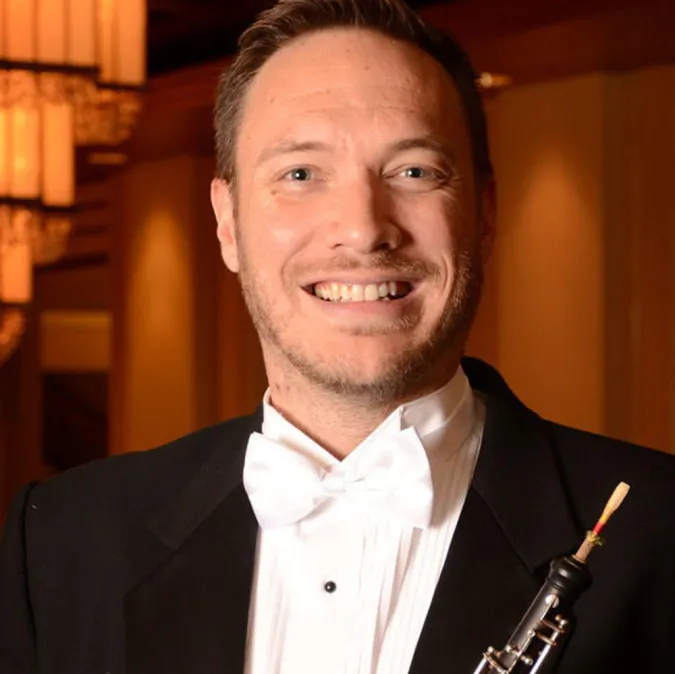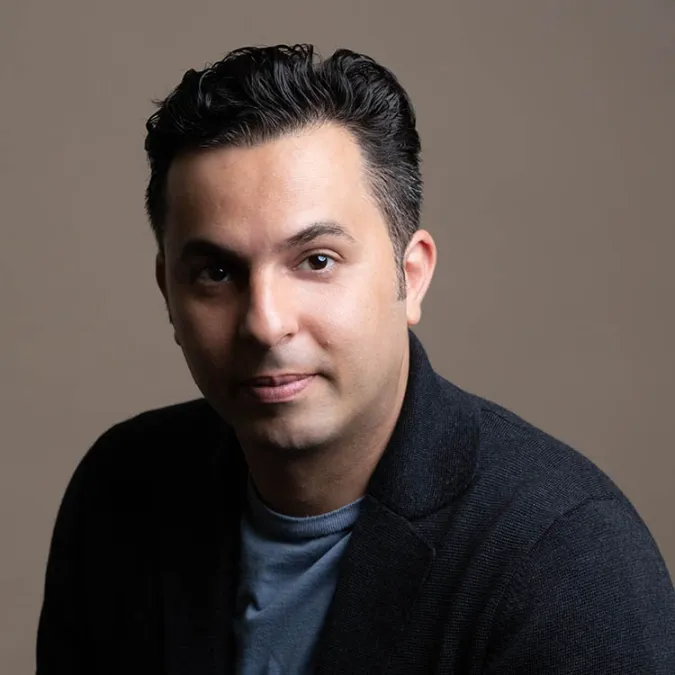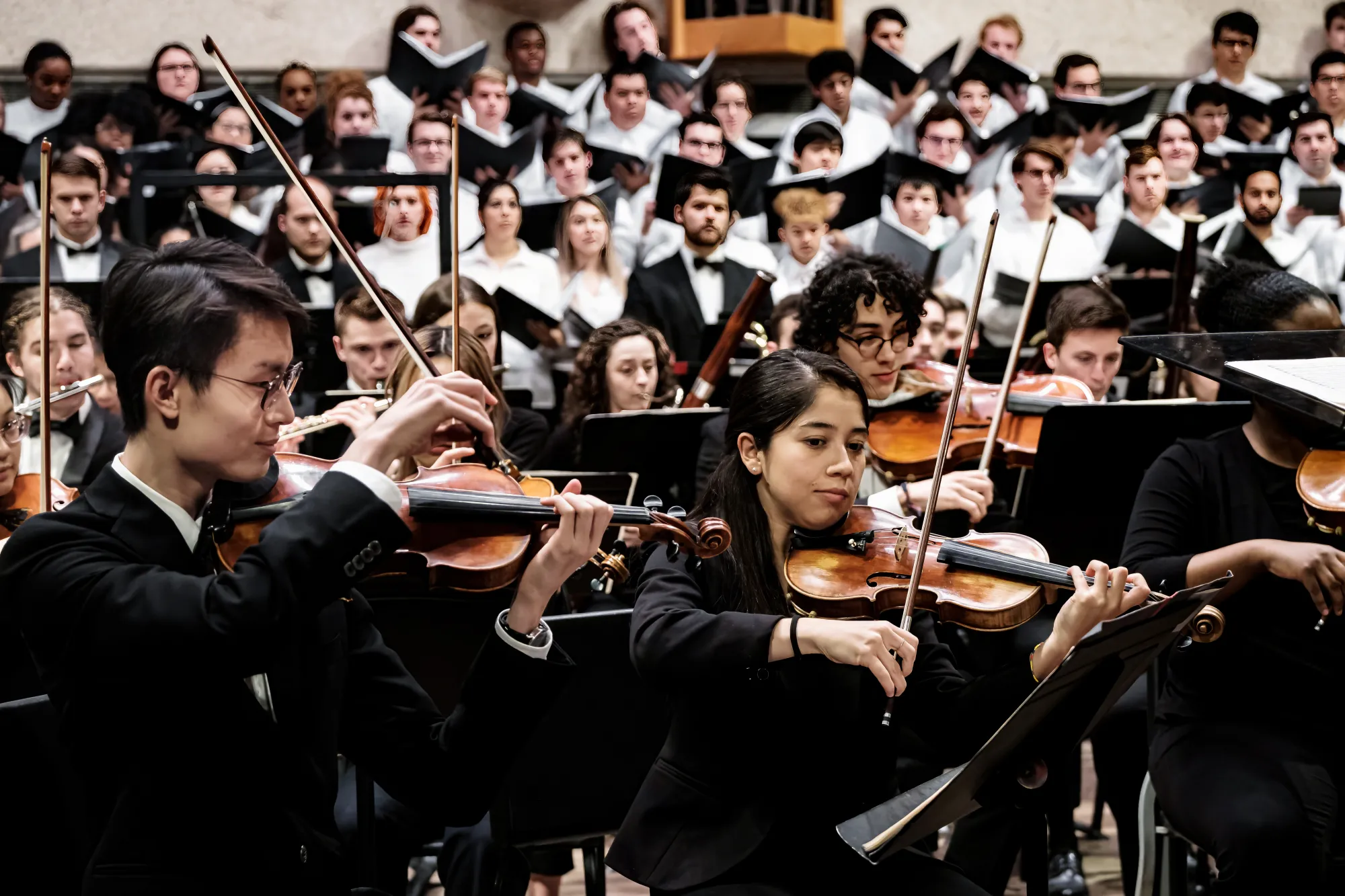Farkhad Khudyev, conductor
Andrew Parker, oboe
This concert will last about 70 minutes with one intermission.
Please silence your electronic devices.
Photography, video, or recording of any part of this performance is prohibited
Program
Claude Debussy
Prélude à "L'après-midi d'un faune"
Prelude to the Afternoon of a Faun
W.A. Mozart
Concerto for Oboe in C Major, K. 314 (285d)
Allegro aperto
Adagio non troppo
Rondo: Allegretto
Andrew Parker, oboe
intermission
Maurice Ravel
Ma Mère l'Oye: 5 pièces enfantines
Mother Goose Suite
Pavane de la Belle au bois dormant
Pavane of Sleeping Beauty
Petit Poucet
Little Tom Thumb
Laideronnette, Impératrice des pagodes
Little Ugly Girl, Empress of the Pagodas
Les Entretiens de la Belle et da la Bête
Conversations of Beauty and the Beast
La Jardin féerique
The Fairy Garden
About the Program
Claude Debussy
Prélude à "L'après-midi d'un faune"
Born August 22, 1862, Paris, France
Died March 25, 1918, Paris, France
Composed 1891–1894 Premiered 1894, Gustave Doret (conductor), Georges Barrère (flute)
Duration 10 minutes
In 1884, Debussy won the Prix de Rome, which came with a three-year stay at the Villa Medici and a requirement to send a new piece of music to the Conseil des Arts to be performed. He submitted Printemps, which the academy refused to accept, warning him about “Impressionism, the most dangerous enemy of artistic truth.” Debussy was thus dubbed an Impressionist—a label he fought against his entire life. He felt more in line with the Symbolist movement, and his Prélude à l’après-midi d’un faune was inspired by a symbolist text by poet Stephane Mallarmé (1842–1898). Debussy described the piece as “a succession of scenes through which pass the desires and dreams of the faun in the heat of the afternoon. Then, tired of pursuing the timorous flight of nymphs and naiads, he succumbs to intoxicating sleep, in which he can finally realize his dreams of possession in universal Nature.” Often considered a turning point in the history of music, Debussy’s Prélude was described by Pierre Boulez as the beginning of modern music: “The flute of the faun brought new breath to the art of music.” Prélude continues to enchant audiences with its famous lyrical melody and layered orchestration that evokes the eroticism of Mallarmé’s poem.
– Penny Brandt
Wolfgang Amadeus Mozart
Oboe Concerto in C Major, K. 3.14
Born January 27, 1756 in Salzburg, Austria
Died December 5, 1791 in Vienna, Austria
Composed 1777
Duration 20 minutes
In 1777, a twenty-one year old Mozart was working in Salzburg in the Court Orchestra of Prince-Archbishop Colloredo, and he was getting antsy. Soon, he would leave that post to travel with his mother in search of new employment; although Munich was to be unsuccessful, Mannheim proved to be a lucrative destination. But first: in April of 1777, the virtuoso oboist Giuseppe Ferlendis joined the Salzburg court orchestra. He and Mozart became fast friends, and Mozart composed his Oboe Concerto in C Major for him. The work was one of the most successful concertos of Mozart’s life, evolving into a frequent party piece for an oboist he would soon meet in Mannheim, Friedrich Ramm. Another important Mannheim musician was the Dutch flautist Ferdinand De Jean, who (alongside being a surgeon with the Dutch East India Company) was a wildly talented musician who commissioned Mozart to write a series of works for the flute. Running short on time (as he always seemed to be), Mozart re-purposed much of his oboe concerto into a “new” concerto for the flute. De Jean was onto his scheme, and refused to pay for that particular work. For both flautists and oboists, the concerto has become standard repertoire — and it’s easy to see why. In its original iteration, the first movement offers the tempo marking Allegro aperto (‘aperto’ meaning ‘openly,’), giving it a rather extroverted opening which carries throughout the work. The second movement is a slowly unwinding aria showcasing the singing qualities of the oboe, and the final movement is a rollicking rondo with a bouncy refrain Mozart would later utilize in his Singspiel Die Entführung aus dem Serail. Listen carefully towards the end, and you might recognize the refrain elongated in canon as the concerto comes to a joyful conclusion.
– Mark Bilyeu
Maurice Ravel
Mother Goose Suite
Born March 7, 1875, Ciboure, France
Died December 18, 1937, Paris, France
Composed 1910
Duration 5 minutes
On the one hand, Ravel’s considerable talent and intellect could be satirical and probing — and somewhat ambiguous — as in La valse. On the other, his Mother Goose Suite will reveal yet another aspect of his penchant for reinterpretation of time-honored musical traditions. Ravel took pleasure in the companionship of animals and children, and enjoyed reading fairy tales to Mimi and Jean Godebski, children of his close friends. In 1910 he composed a piano duet for the young children based upon a few of these stories and orchestrated the suite the next year. The various movements of Mother Goose Suite are based upon versions of traditional tales as told by three well-known French authors. Ravel is likely the most adroit of those who orchestrate, or adapt for orchestra, music originally written for piano or other instruments. His version of Mussorgsky’s Pictures at an Exhibition is certainly the best known, and he was wont to orchestrate his own keyboard works, as well. What is most intriguing about this suite is the way in which very simple textures for young pianists assume a marvelously profound quality under the expert pen of Ravel the orchestrator—no obvious vestige of the original medium is palpable. While conceived in a refined, accessible, and modest style, the various movements exhibit Ravel’s sophisticated use of “exotic” musical materials, including pentatonic scales (the black keys on the piano) and quartal harmonies (chords made of stacked fourths—not the usual thirds). His mastery of orchestral sound is aptly illustrated by the flute and harp of Sleeping Beauty; the plaintive English horn of Tom Thumb after the birds (woodwinds) have eaten his trail of crumbs; and the exotic (and perhaps clichéd by now) music of the little Chinese empress and her orchestra of tiny dolls. In the Beauty and the Beast (clarinet and bassoon, respectively), the transformation of the Beast into the Prince is easy to spot in the solo violin and harp passage. The Fairy Garden begins simply, perhaps as an extension of the mood of the previous, happy moments, and grows into a luminous celebration of its subject.
-Wm. E. Runyan
About the Artists
Andrew Parker

Dr. Andrew Parker is currently the oboe professor at the University of Texas at Austin and faculty at the Round Top Festival Institute. In addition to his teaching, Andrew maintains a rich performing career as a soloist and chamber musician. He has performed concerti with numerous orchestras including the Quad City Symphony, the Great Falls Symphony, the Puerto Rico Philharmonic, the University of Iowa Chamber Orchestra, and the University of Texas Symphony Orchestra. His solo album, The Singing Oboe, was featured as CD of the week for two consecutive weeks on the Boston classical station 99.5 WCRB. His other albums, Handel: The Halle Sonatas and Portraits in Music, were released on the Equilibrium and MSR labels respectively. Andrew has been principal oboe of the Quad City Symphony Orchestra for 10 seasons. After receiving his bachelor’s degree at the Eastman School of Music and master’s degree at Yale University, he finished his doctoral studies at the University of Michigan.Andrew’s primary teachers have been Richard Killmer, Nancy Ambrose King, and Elaine Douvas.
Farkhad Khudyev

Farkhad Khudyev is the winner of the Gold Medal “Beethoven 250” at the 1st International Arthur Nikisch Conducting Competition; the Solti Foundation US 2018 and 2022 Career Assistance Award; the Best Interpretation Prize at the 1st International Taipei Conducting Competition; the 3rd prize at the 8th International Sir Georg Solti Conducting Competition; and the Gold Medal/Grand Prize at the 2007 National Fischoff Competition. Khudyev has worked with orchestras worldwide including the London Philharmonic Orchestra, Frankfurt Radio Symphony Orchestra, Frankfurt Opera Orchestra, Danish National Symphony Orchestra, Seattle Symphony, Dallas Symphony, Los Angeles Philharmonic, San Diego Symphony, Monterey Symphony, George Enescu Philharmonic Orchestra, Xi’an Symphony Orchestra and the State Taipei Chinese Orchestra. Farkhad was born in Turkmenistan, where he studied at the State Music School for gifted musicians, and then completed his studies at Interlochen Arts Academy, Oberlin Conservatory and Yale University. Khudyev serves as the Music Director of the University of Texas Symphony Orchestra in Austin, and the Orchestral Institute at the Hidden Valley Institute of the Arts in Carmel, California.
symphony orchestra
Violin I
Chloe Yofan, concertmaster
Yusong Zhao
Brandon Garza
Jordan Bartel
Shijie Li
Yvonne Ma
Zi Wang
Kai Lindsey
Alice Pak
Georgia Halverson
Pedro Salas
Leiana Campanaro
Violin II
Mei Liu, principal
Yida An
Zichuan Wang
Sui Shimokawa
Wells Gjerlow
Jimmy Shim
Suhaas Patil
Peter Kim
Noah Briones
Ivan Arras Morales
Emma Thackeray
Kai Cole
Han Na Lee
Viola
Liam Cao, principal
Harrison Knight
Thomas Gougeon
Gwendolyn Lay
Kyle Adams
Grace Dias
Cecilia Nguyen
Cello
Seungyeon Oh, principal
Aidan Bolding
Katsuaki Arakawa
Christopher Tran
Wesley Fu
Javy Liu
Selina Xu
William Pu
Arturo Gonzalez
Kyra Hong
Zachary Houlton
Bass
Kaitlyn Ruiter, principal
Andres Hernandez Labra
William Penn
Shiying Feng
Jewelie Lujan
Xingchang Ye
Ema Deguchi-Kelly
Eddie Otto
Lydia Chen
Natalia Guerra
Flute
Riley Bender1
Kyndahl Britton
David Ma3
Oboe
Ryan Hirokawa, principal
Genevieve Britten
E.M. Shank
Clarinet
Sadie Murray1
Alexander Vaquerizo3
Bassoon
Rishabh Sajjan1
Mallory Mahoney3
Horn
Daniela Garcia1, 2
Owen Clark3
Charlotte Allen
Bianca Miller
Percussion
Seth Underwood
Marcos Jurado
Isabella Scotti
Colton Townsend
Harp
Natalie Rochen, principal
Wren Levenhagen
Celeste
Tianying Xiong
PRINCIPALS
1. Debussy
2. Mozart
3. Ravel
Upcoming Events

Mahler Symphony No. 2, Resurrection
Symphony Orchestra & Combined Choirs
Leah Crocetto, soprano
Sophio Dzidziguri, mezzo soprano
One of the most beloved symphonies in the canon, Mahler's "Resurrection" symphony boasts a large orchestra, mezzo and soprano soloists, and similarly to Beethoven's 9th Symphony, a large choir in the final movement. For this performance, the Butler School's Concert Chorale and University Chorus ensembles will join forces; they will be joined by Butler School alumni singers and community choral singers from around Austin.
Tuesday, March 31, 8:00 p.m.
Long Center for the Performing Arts
SYMPHONY ORCHESTRA
Saturday, November 8, 7:30 p.m.
Bates Recital Hall
UNIVERSITY ORCHESTRA
Tuesday, November 18, 7:30 p.m.
Bates Rectial Hall
BUTLER HOLIDAY CONCERT
Featuring Chamber Orchestra And Choirs
Saturday, December 6 & Sunday, December 7
Bates Recital Hall
SYMPHONY ORCHESTRA
Sunday, February 1, 4:00 p.m.
Bates Recital Hall
UNIVERSITY ORCHESTRA
Tuesday, February 24, 7:30 p.m.
Bates Recital Hall
Event Details
$5 – 15
All University of Texas at Austin students are allowed one free ticket as long as they are available. Student tickets must be picked up at the Box Office with valid student I.D. Seating is unassigned.
If you are a patron with specific seating needs, please email tickets@mail.music.utexas.edu and we will reserve ADA seating for you.


